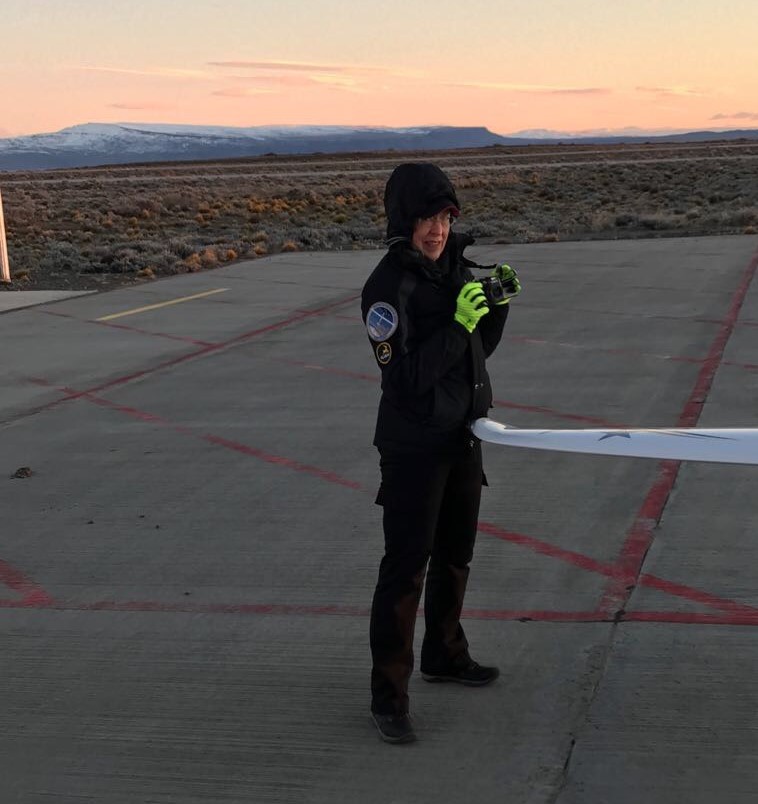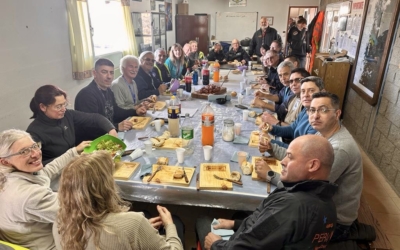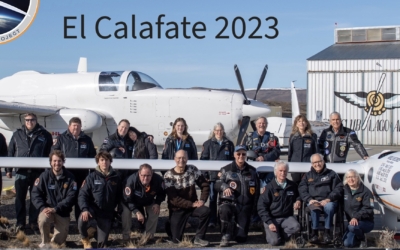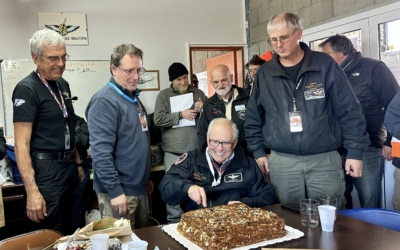On August 15, 2017 Airbus Perlan Mission II team gathered in the hangar for an early launch. The weather balloon team of Loris, Sandra, Stewart, Martin, Alec and Michael had collected wind, temperature, and altitude data to use to fine tune the forecast. Those hardy souls start their duties an hour ( or two) before everyone else. Since the sun was just up and the wind was blowing, it was cold out on the ramp and runway. Linda, Tago, Stewart, Alec, Loris, and Jackie were ground ops. Martin took photograghs and worked with the tail camera footage. Miguel helped with aviation translations. Sandra applied for credentials for newly arriving team members. The lower air mass was very dynamic. The Perlan 2 lost 2,000 feet on tow in the sink just before reaching the primary wave. As soon as Jim Payne and Tim Gardner got off at 10,000 feet they had 1500 feet per minute of lift. Unfortunately that quickly died back to 400 feet per minute above 14,000 feet. See the flight trace at
https://www.onlinecontest.org/olc-2.0/gliding/flightinfo.html?dsId=6064755
After another excellent tow by Cholo in the CNVVM Boreo, CapCom went to work. Ed, Morgan, Michael, Stewart, and Loris kept the computers, telemetry, weather, satellite photos, balloon data and forecasts refreshed and available to pilots Jim Payne and Tim Gardner. Can you tell that the entire team works a full day when there is a flight?
This was our highest flight at 33,200 feet (10,000 meters) which was above the balloon data analysis tropopause of 29,000 feet. When telemetry data from in-flight flutter excitation runs was downloaded to CapCom, Morgan and Loris emailed it to ATA in San Diego. ATA was standing by for the data and had a quick response of “no anomolies.” (We took Perlan 2 to ATA in San Diego after first flight in 2015 for them to model the airframe’s reaction to vibrations for flutter predictions. There are some short videos of this on our YouTube channel.) This ability to analyze in flight data while still flying is state of the art thanks to Morgan’s system.
All telemetry data for other systems like oxygen, air, temperatures, and battery stayed acceptable throughout the 4.5 hour flight in extremely fridgid conditions (-40 to -60 C). There is a photo of the LSSD (Life Support Systems Display) with everything in the green. Tom Payne and Morgan spent a lot of hours getting the LSSD to work for us. The balloon data had shown that the winds shifted 50 degrees in direction at 33,000 feet. Indeed Jim and Tim found little wave lift above that altitude.
So they decided to return home and reset for the next flight. Tim, Alec, Stewart, Loris serviced the air and oxygen, removed the rebreathers to be cleaned and mounted 2 new rebreathers, downloaded science data, charged batteries, and prepped for a possible flight tomorrow.
Tim’s in flight photos were beautiful. They will go in a separate blog. Other photos came from Martin, Miguel, Stewart and Tago. I tried to keep the info flowing to our Twitter account, photo a little, adhere to the checklists, hold screwdrivers or hatches, listen to the radio, watch the weather, organize on the runway, and try to stay out of people’s way so they can do their jobs.
Perlan soars! Perlan Se Eleva! Jackie





